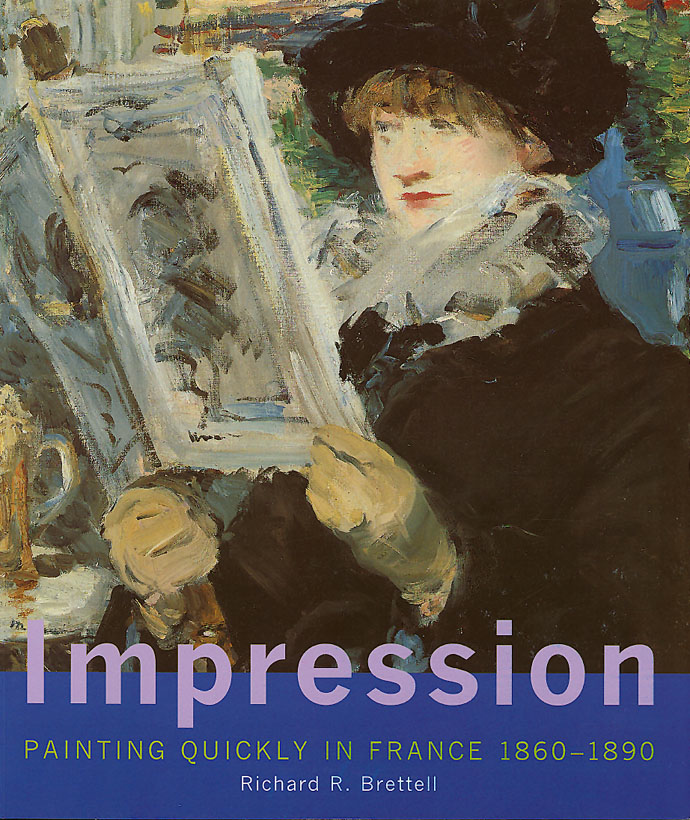
june 17–september 9, 2001
The Pre-Impression: Oil Studies and Oil Sketches
The Impressionists were inspired by a long tradition of rapid painting in European art. Old Master oil sketches and open-air landscape paintings by Barbizon artists served as powerful precedents, even if such works were usually made as studies for highly finished and, indeed, slowly painted works. Pissarro's Study of a Sunset, Pointoise, although signed and dated, nevertheless has much in common with Corot's Well among the Dunes, a typical oil sketch from nature. In each case the artists applied paint quickly and loosely, their brushes loaded with pigment, to render a sensation of the scene such as the movement of wind through trees and clouds. The great innovation of the Impressionists was to elevate such quickly painted pictures to the status of the finished work of art, suitable for sale and exhibition.
Camille Pissarro
French, 1830-1903
Study of a Sunset, Pontoise
1877
Oil on canvas
15 1/8 x 22 inches
Charles B. Key, M.D.
Jean Baptiste Camille Corot
French, 1796-1875
Well Among the Dunes
c. 1854
Oil on panel
18 1/8 x 22 inches
Mueum Mesdag, The Hague

The "point" of Impressionist art was to capture the fleeting moment, the transient effect of a certain place, person, or time. Impressionist artists worked on-site with speed and directness, hoping to distinguish their works with a new freshness, immediacy, and truthfulness. Yet the paintings they exhibited were in fact almost always completed in the studio later. This beautifully illustrated book investigates for the first time the works that might truly be called "Impressions"—paintings that appear to be rapid transcriptions of shifting subjects but were nonetheless considered finished by their makers. Renowned Impressionist scholar Richard R. Brettell identifies and discusses Impressions by some of the best-known artists of the period, including Manet, Monet, Renoir, Sisley, Morisot, Degas, Pissarro, and Caillebotte.
The book surveys the various practices of individual artists in the making, signing, exhibiting, and selling of Impressions. Brettell discusses the pictorial theories behind the paintings, the sales strategies for them, and the various forms they took, including works completed in one sitting, "apparent" Impressions, and repeated Impressions. In a concluding chapter, the author considers a small group of works by Vincent van Gogh, who painted with an almost fanatical rapidity and was the only major Post-Impressionist painter to push the aesthetic of the Impression even further.
This book is the catalogue for an exhibition at the National Gallery in London from November 1, 2000, to January 28, 2001, the Van Gogh Museum in Amsterdam from March 2 to May 20, 2001, and the Clark Art Institute from June 17 to September 9, 2001.
240 pages, 9 3/8 x 11 inches
183 color and six black-and-white illustrations
2000
Published in association with Yale University Press
ISBN 0-300-08446-3 (hardcover)
ISBN 0-300-08447-1 (softcover)
